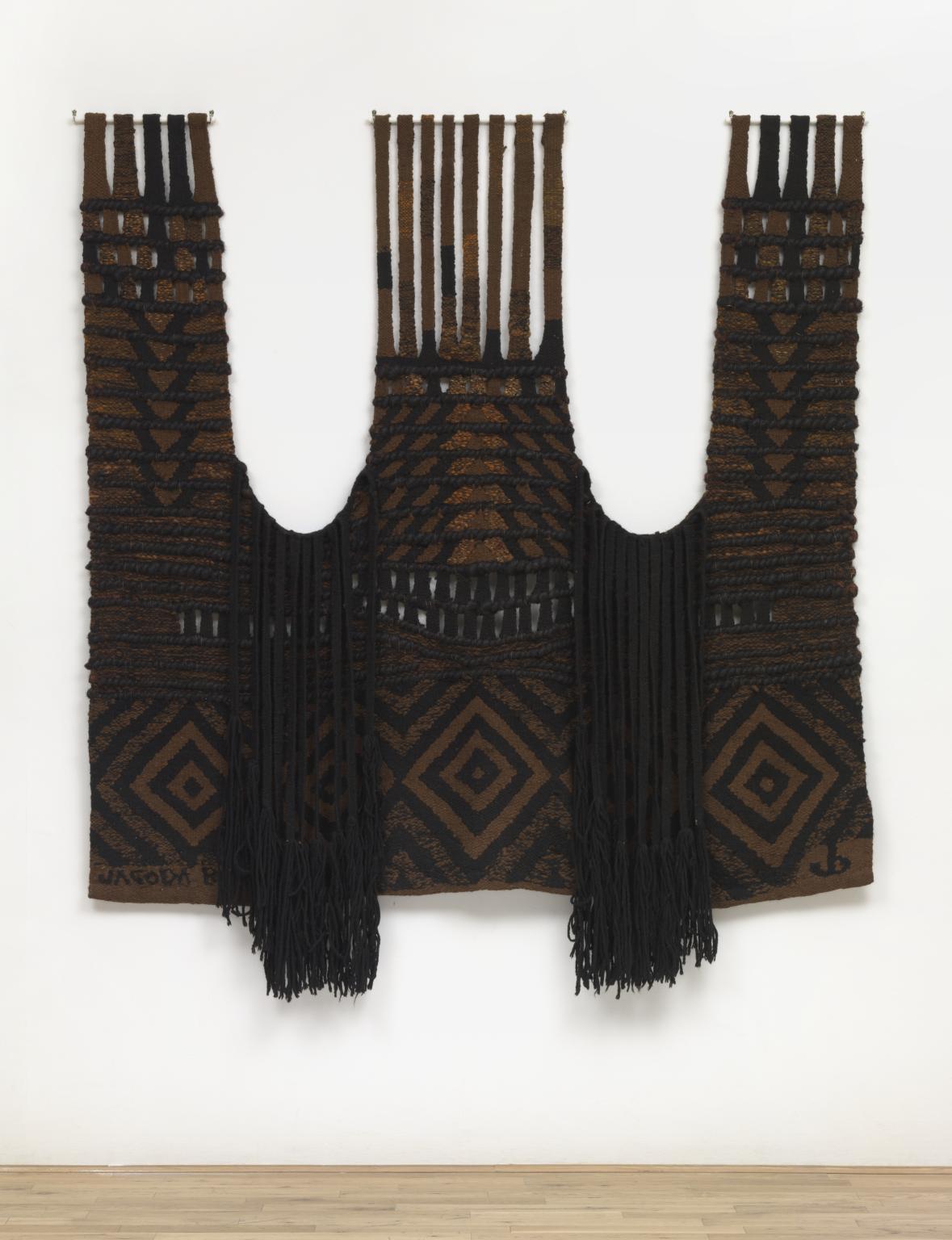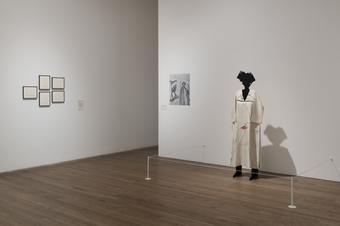12 rooms in In the Studio
In her work, Huguette Caland gives body parts and gestures an abstract quality, often with a sense of joy and humour
Caland began to study art in 1964, at the age of 33. After juggling art making and family life in Beirut, Lebanon, she later decided to wholly focus on her art practice. She left her home and family and moved to Paris in 1970. Caland’s father was Bechara El-Khoury, Lebanon’s first president after the country gained independence from France in 1943. Caland later explained: ‘I wanted to have my own identity. In Lebanon, I was the daughter of, wife of, mother of, sister of. It was such a freedom, to wake up all by myself in Paris. I needed to stretch.’ The works in this room convey this newfound sense of independence where Caland was experimenting with scale and medium.
What can you see in the artworks that might express a sense of freedom?
The single continuous line is a recurring motif and method in Caland’s work. ‘In order to silence myself, I draw lines’, she once said. She uses a technique she was taught at university where the hand remains on the page until the image is finished. She said: ‘I always thought that there was one single line that wandered in space. Every one of us takes it. You can catch it on the fly somewhere, bring it down, make a letter out of it, a flower, a drawing, a word but it’s the same line, and then you release it back into space.’
What might you create with a continuous line of your own?
In the works displayed here, Caland uses the line to rethink how the body exists in space, often conveying intimate moments. She made paintings and drawings at the same time, so forms often recur across both media. Caland’s lines that touch, entangle and come apart speak to a time when she and many other women were reimagining ways of creating and being in the world.
Art in this room

Sorry, no image available
Sorry, no image available
Sorry, no image available

